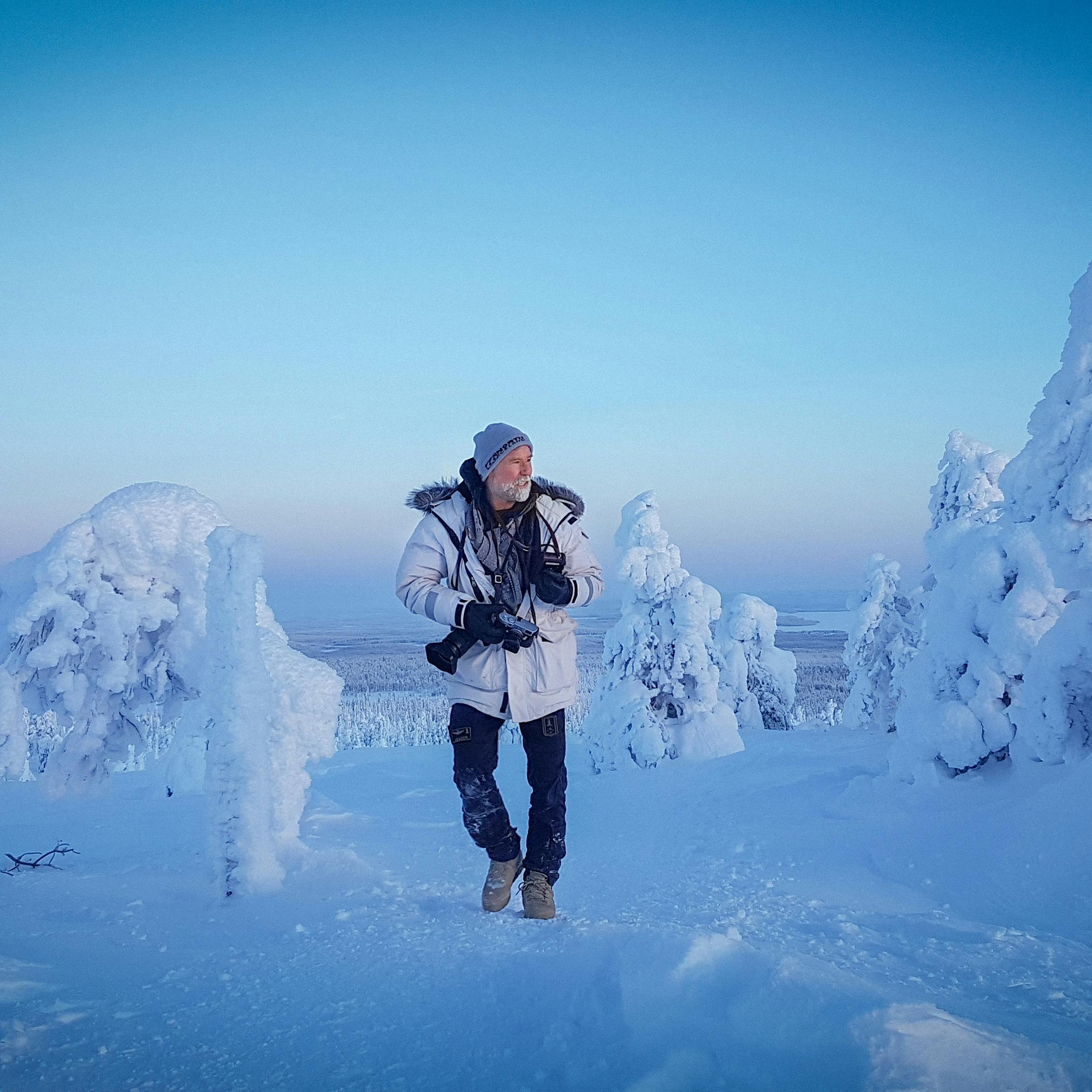In the harshest environment, the softest light appears
Blue Hour
It is during the darkest and coldest time of the year in Iceland where the softest and most diffused light appears. It is this light that has no equal in the eyes of Alex Strohl, who visits Iceland on a regular basis to capture this unique phenomenon.
With more than a decade's experience of documenting the cold regions of the North, French photographer and filmmaker Alex Strohl explores the natural world with a sense of excitement, daring, and joy. Alex lives in Montana, US, and depending on the season, you’ll find him ski touring, gravel riding, or hiking often in the Westfjords, his favorite part of Iceland.

Alex Strohl wearing Tindur down jacket in the Westfjords of Iceland
Why is photographing the blue hour in the North is so special to you?
It's really the quality of the light. I've never seen such soft, diffused, cold light as in these northern lattitude in the peak of winter. It's a feast for the eyes and the soul. The moment when it caresses the top of the mountains in the late morning is one that I cherish and end up seeking. It reminds me of my place in this world, one of observation.
When did you first come to Iceland and what has drawn you back so many times?
I first came in the autumn of 2011 with my now-wife Andrea. I'm not entirely sure what made us come, probably because we had flown over it so many times on our way to the US. It seemed so isolated and interesting from the sky that we thought we'd come to take a look.
I've been coming to Iceland around twice a year since then so there's something that keeps me coming back. Probably a mix of the relationships I've built here with people like Benjamin Hardman paired with the geography of the island. People often say that Iceland looks like nowhere else on earth and that is very accurate. There are very few trees, vast amounts of barren volcanic fields in the highlands, and very large glaciers on the south coast. It's a very unique combination...

How does Iceland differ from Montana / are there any similarities?
They are very different from an objective perspective; Montana is home to mountains, many trees, abundant wildlife, and the ocean is 600 miles away from it. What unifies these two places for me is the sense of remoteness and isolation. Both have very little population density, and both are hard to get to. Those are the places I seek — the more inconvenient to get there, the better.




Life seems to go on at a different pace
The Westfjords have a diverse mix of fishing, slow fjord life, and action activities like ski touring, is there something specific about this community or small towns that you think could inspire change in other parts of the world?
The one thing I admire most in the Westfjords is the sense of community and the way of life. Life seems to go on at a different pace there, it's not necessarily slow but it's much more contemplative. People are also very good at adapting to the conditions and those are things we can all learn from.

As a traveler looking in, what do you think drives the Icelanders to live through the long dark winters?
Perhaps it's the prospect of summer and its midnight sun? From my conversations with Icelanders, it seems like the darkness is not really a problem, it's just a part of life and that echoes what I mentioned earlier: Icelanders are masters of adaption. They've accepted this is how winter is and just got on with it. I admire that.


We had a freezing and icy trip, did your gear survive the cold? How did the 66°North clothing hold up in the elements?
You're right, it never got above freezing. As soon as we'd leave the cabin we'd be bundled in Tindur down and Eskja fleece pants so we never even got close to being cold. These are bombproof pieces designed specifically for what we did.
What to wear
Chasing the blue hour


Five years ago, Benjamin Hardman embarked on his first photographic mission in an Arctic winter climate. Ever since, Benjamin’s passion for the cold has driven him further in his search of the North’s most obscure landscapes

Ragnar Axelsson, better known as Rax, is an Icelandic photojournalist who has been photographing people and nature in the Arctic for over four decades. He has seen big changes in the environment and how global warming is affecting the Arctic countries.